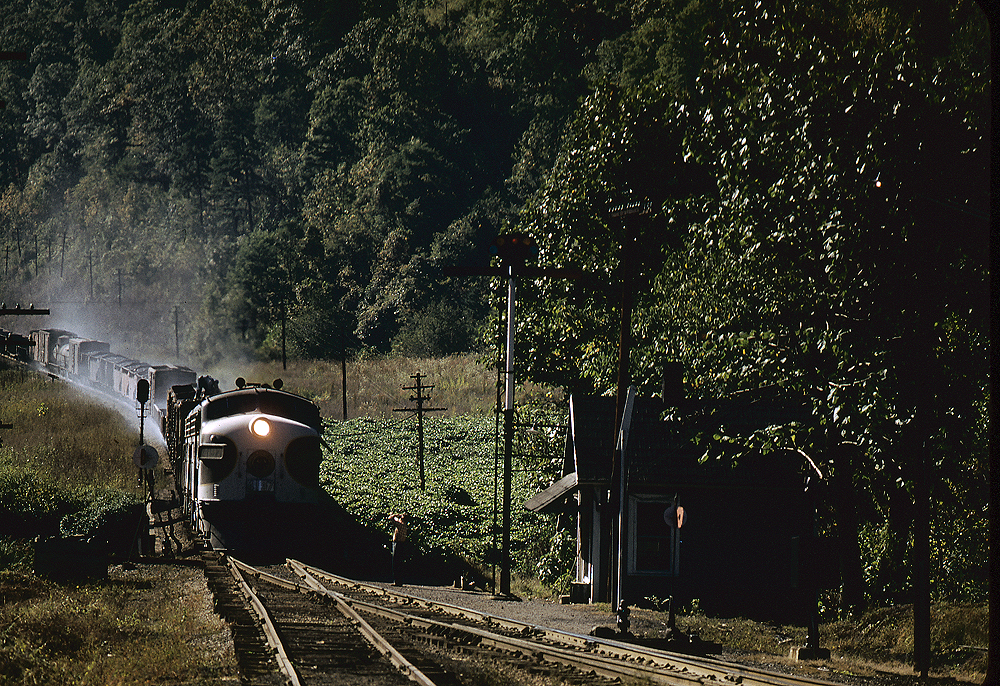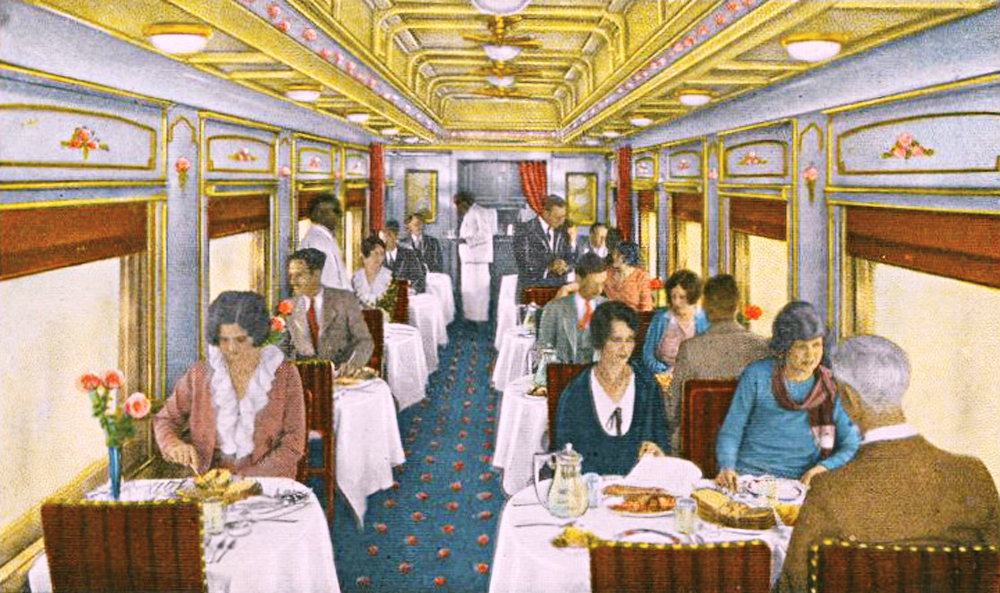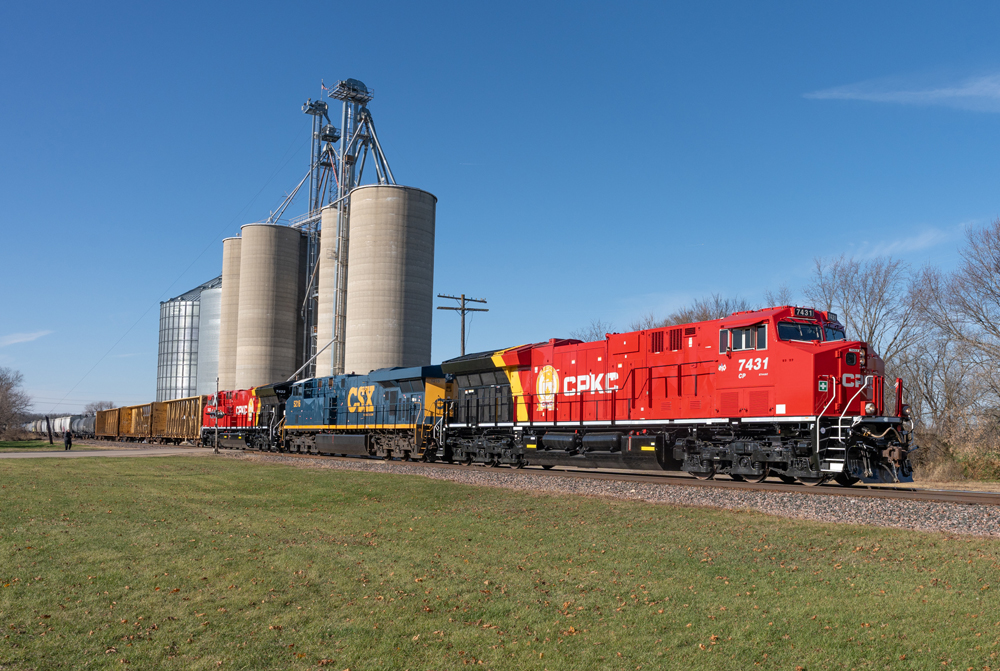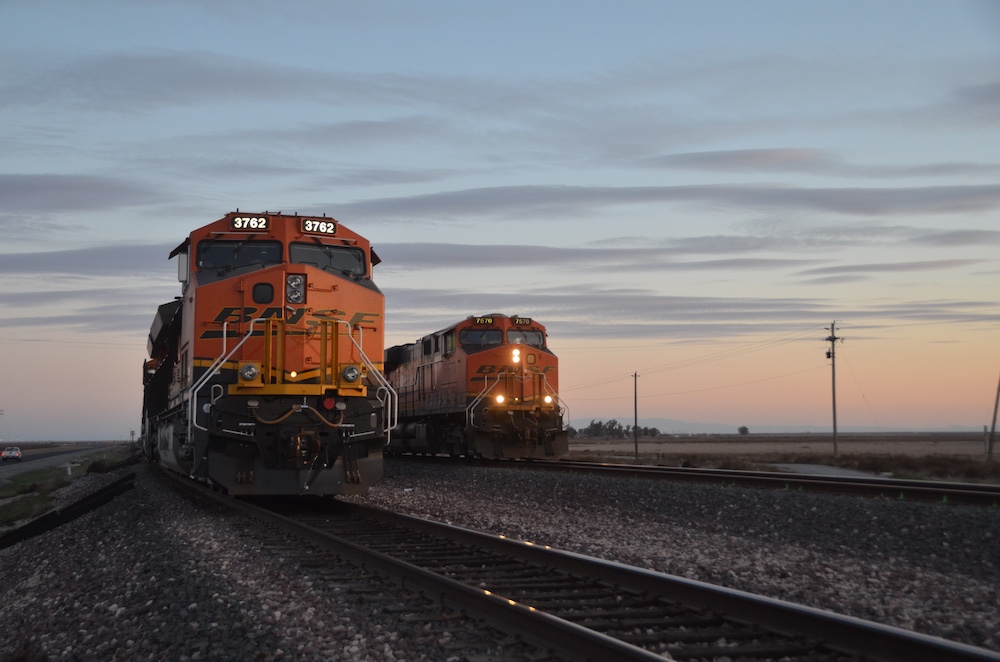But that’s just advertising, which some companies omit for economy’s sake. And if a car changes hands, its new owner may not even bother to paint out the old one’s name. To find out whose car you are looking at – and a wealth of other vital information – you have to read the fine print.
The Association of American Railroads sets standards for the uniform marking of freight cars with regard to car ownership, weight, load capacity, dimensions, and maintenance. In addition, car owners choose to display data relating to various devices and equipment so the cars may be properly used and repaired.
Reporting marks
Freight cars are identified by reporting marks of two to four letters and a number of up to six digits.
The AAR assigns a unique combination of letters to each car owner, usually based on the company’s initials. An owner may have more than one set of reporting marks to distinguish different car types in its fleet.
Reporting marks ending in X belong to private car owners, as opposed to common carriers.
Loading and weight dimensions
Data displayed near the reporting marks refers to the weight of a freight car and its contents.
CAPY (nominal capacity) is the intended load-carrying capacity of the car, to the nearest 1000 pounds. This is determined by the structural strength of the car’s underframe and the size of the journal bearings of the car’s trucks.
LD LMT (load limit) is the maximum weight of lading that can be carried by the car, to the nearest 100 pounds. This is determined by subtracting the weight of the car when empty from the total allowable gross weight given the size of the car’s journal bearings. The load limit for a car is usually a bit greater than its capacity; the two figures can be equal, but capacity can never exceed load limit.
LT WT (light, or empty, weight) is the weight of the car when empty.
Accompanying the light weight marking is a date indicating when the railroad or owner last verified the car’s weight. The letters for this mark are not always reporting marks; sometimes a location code is used. NEW and a date indicates that the weight shown is the car’s as-built weight, and that it hasn’t been field-checked since.
Physical dimensions
The physical dimensions of a car are important to its loading and operation.
Plate markings indicate whether a car’s extreme outside dimensions falls within a standard cross-section – a useful thing to know when restricted clearances are involved. Standard car cross-section drawings, or plates, are designated Plates B, C, E, and F. If a car’s dimensions are entirely within Plate B (the smallest), no marking is shown. For cars fitting within Plate C, E, or F, a square with the appropriate marking is shown. A car whose dimensions exceed a given plate will display a circle marked, to use a common example, EXCEEDS PLATE C.
EXW (extreme width) and H (height above the rail at which that width occurs) are shown when a car’s eaves height (see below) exceeds 12 feet, 0 inches. Cars over 15 feet, 6 inches high will also display EXH (extreme height) and W (width at that height).
EW (eaves width) and H (eaves height) show the width and height at the eaves – the edge of the roof projection, which extends over the sides of the car.
IL shows the car’s inside length.
IW shows the inside width.
IH shows the inside height.
CU FT (cubic feet) shows the volume of the car, based on interior dimensions.
The consolidated stencil
The black rectangular area on freight cars is known as the consolidated stencil. It’s here that maintenance information on the air-brake system and journal bearings, and the built-date, must be displayed.
This area has been simplified and reduced in size in recent years, and many cars’ stencils are in the older format.
ABD is the type of brake equipment found on the car. The ABDW brake valve is a modification of the ABD, which is descended from the AB of 1933.
LUB (lubricated, for roller bearings) or RPKD (repacked, for plain bearings) heads the journal-bearing maintenance column. NO means that the car has NFL bearings, which require no field lubrication. If the journals need to be serviced, the date and location of the work, as well as the interval until the next servicing, are shown.
A designation of BLT 7-67 would mean the car was built in July 1967. When a car is rebuilt, REBLT and the month and year are shown.
Other markings
There are several other common car markings.
2 IN HF COMP SHOES means the car has 2-inch thick, high-friction, composition (as opposed to cast-iron) brake shoes.
A two-letter symbol like XM on the CAPY line represents the AAR’s mechanical designation of the car.
A mark like BS-192-A is the railroad’s own classification for the car. Often there are notes associated with a boxcar’s door such as its dimensions and instructions for opening and closing it.
To keep a car’s floor from being damaged by an overweight forklift, a mark like 50K (50,000 pounds) is placed near the doors to show the maximum axle load permitted in the car.
JACK HERE shows where to place a jack while jacking up the carbody (to rerail or repair the car). Cars may also have notes about when and where they were painted.
An excellent source for more information on this subject, such as lettering size and placement standards, is Simmons-Boardman Publishing Co.’s booklet “Freight Cars: Lettering and Marking.”














i LIVE IN ASHCROFT BRITISH COLUMBIA (WHERE WE SEE EVERY TRAIN THAT EVER LIVED) and we just saw a very colorful train go through, it had big X on it and some big + on it (on the individual cars) and some cars had big up and down stripes on them, just very unusual, any ideas?
When was the CAPY marking on new and remarked freight cars eliminated?
Hello, some friends in my hometown of Hawley, MN (on the BNSF main line, formerly the Northern Pacific main line), discovered that they have been living in an old box car. The house was built in the 1890’s (The NP came through town in 1872) – and they are trying to get information on the origins of the box car. This link has a photo, thanks for any info: http://www.inforum.com/variety/4134272-hawley-couple-makes-unusual-find-when-demolishing-their-1890s-era-home
I think what would interest me the most is a more general date of when a particular car type was introduced. For example: 'What year did 50 foot boxcars start showing up?' or 'What year did auto racks start showing up?'. My purpose in this is to establish a more prototype era for my model railroad. Because I love the EMD E units so much, I'm modeling up to the year 1971 when Amtrak took over. There are many styles of cars that didn't show up until after that date.